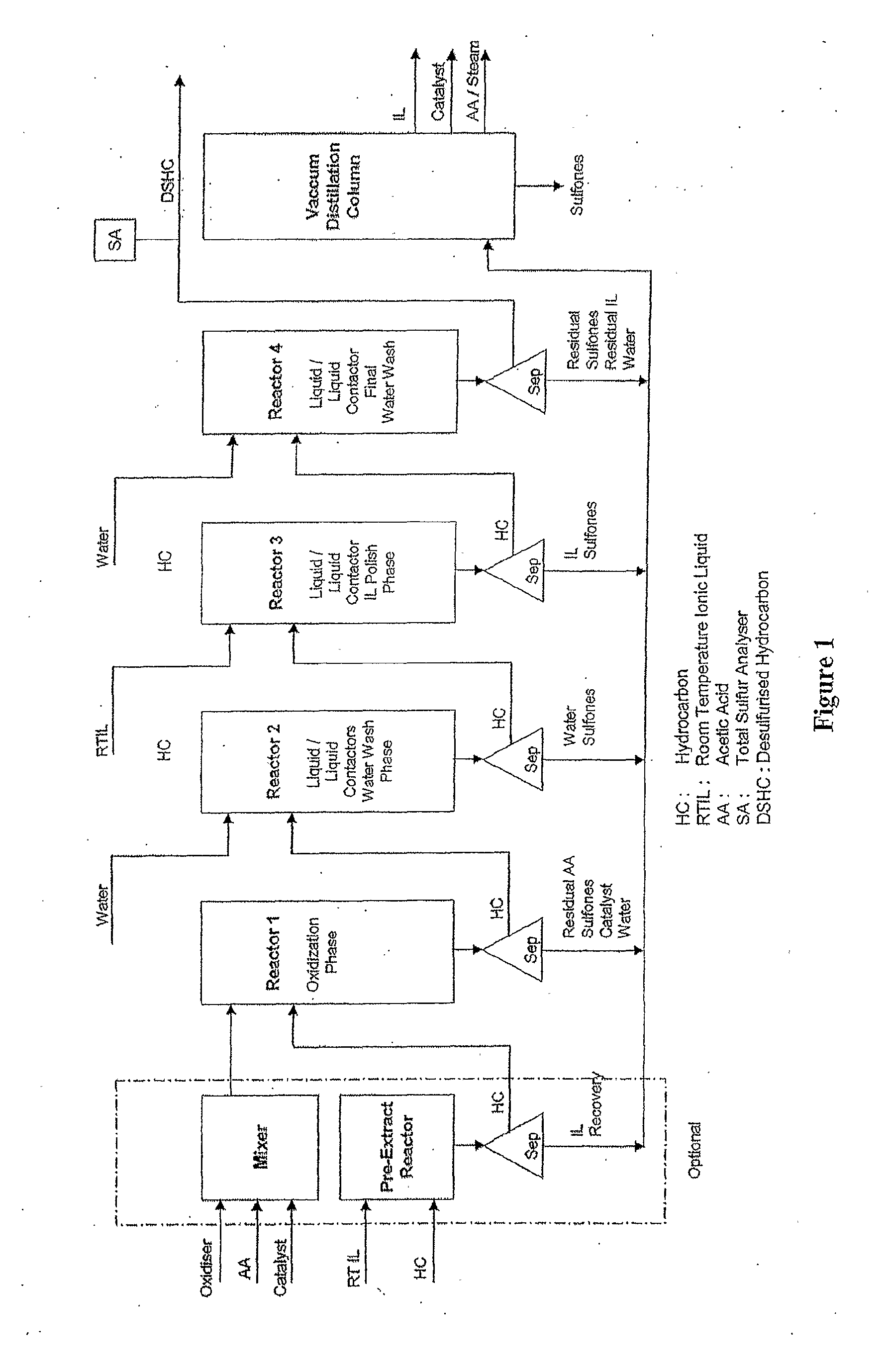Process for Removing Sulphur From Liquid Hydrocarbons
a technology of liquid hydrocarbons and sulfur compounds, which is applied in the direction of hydrocarbons, acid-containing liquid refining, oxygen compound refining, etc., can solve the problems of unsustainable large quantities of hydrogen, negative effects on technical operations, and difficulty in rendering these processes both economically and environmentally benign, etc., to achieve low cost, simple and economically viable
- Summary
- Abstract
- Description
- Claims
- Application Information
AI Technical Summary
Benefits of technology
Problems solved by technology
Method used
Image
Examples
Embodiment Construction
[0040]The present invention will now be further described by way of preferred embodiments which are intended to be illustrative only and not restrictive.
[0041]FIG. 1 shows a general scheme of one embodiment of the process of the present invention. In this embodiment, hydrocarbon material, water and oxidiser are thoroughly mixed for a selected period of time. The mixture is then allowed to settle so that two distinct layers may form. The lower layer which contains the majority of oxidised sulfur compounds is removed, preferably for recycling. The upper layer may be sampled at this point to analyse for sulfur content. If desired, this layer may be taken as the final product or purified further. For further purification, the extraction procedure may be repeated one or more times using water. A final extraction step may be conducted using IL.
[0042]FIG. 2 shows an embodiment of the invention in three stages. In a first stage, hydrocarbon material, water and oxidiser are thoroughly mixed ...
PUM
 Login to View More
Login to View More Abstract
Description
Claims
Application Information
 Login to View More
Login to View More - R&D
- Intellectual Property
- Life Sciences
- Materials
- Tech Scout
- Unparalleled Data Quality
- Higher Quality Content
- 60% Fewer Hallucinations
Browse by: Latest US Patents, China's latest patents, Technical Efficacy Thesaurus, Application Domain, Technology Topic, Popular Technical Reports.
© 2025 PatSnap. All rights reserved.Legal|Privacy policy|Modern Slavery Act Transparency Statement|Sitemap|About US| Contact US: help@patsnap.com



